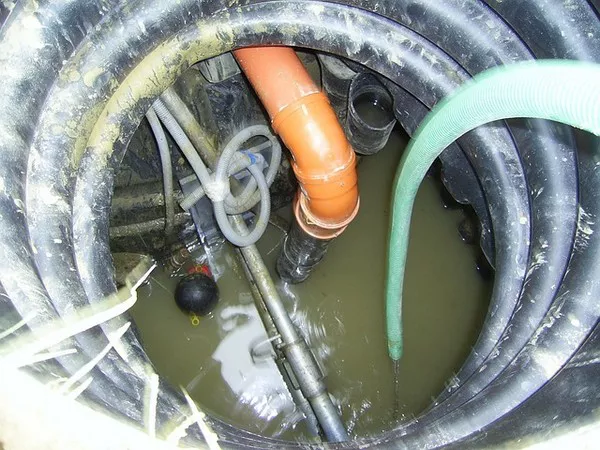In the realm of wastewater treatment, Sewage Treatment Plants (STPs) play a pivotal role in ensuring the safe disposal of sewage and other wastewater. Within these treatment plants, various processes and equipment work together to remove contaminants and render the water suitable for discharge into the environment. One crucial component of an STP is the STP tank, which serves as the primary site for the treatment process. This article aims to provide a comprehensive understanding of STP tanks in wastewater treatment, exploring their purpose, design, and applications in wastewater treatment.
The Purpose of STP Tanks in wastewater treatment:
STP tanks serve as the primary containment vessels where the initial stages of wastewater treatment take place. The primary purpose of these tanks is to facilitate the separation of solids and liquids present in sewage. Raw sewage enters the STP tank, where it undergoes physical, chemical, and biological processes to remove impurities and contaminants.
Design and Structure of STP Tanks in wastewater treatment:
STP tanks come in various designs and configurations depending on the specific requirements of the wastewater treatment plant. However, certain fundamental elements characterize their design and structure.
Size and Capacity:
STP tanks vary in size and capacity based on the volume of sewage they are designed to treat. Larger treatment plants typically have larger STP tanks to accommodate higher volumes of sewage flow. The capacity of an STP tank is determined by factors such as population served, hydraulic load, and treatment objectives.
Construction Materials:
STP tanks are commonly constructed using materials such as concrete, steel, or fiberglass reinforced plastic (FRP). Concrete tanks are durable and can withstand the corrosive effects of sewage and wastewater. Steel tanks offer flexibility in design and can be customized to fit specific space requirements. FRP tanks are lightweight, corrosion-resistant, and suitable for installations where space and weight constraints are significant considerations.
Configuration:
STP tanks may be designed in various configurations, including rectangular, circular, or cylindrical shapes. Rectangular tanks are often preferred for their efficient use of space and ease of construction. Circular tanks provide uniform flow patterns and are suitable for applications requiring continuous mixing of wastewater. Cylindrical tanks offer structural integrity and are commonly used in large-scale treatment plants.
Baffles and Dividers:
Internal baffles and dividers are installed within STP tanks to enhance the treatment process. Baffles help in directing the flow of sewage and promoting sedimentation, while dividers separate different treatment zones within the tank. Proper placement of baffles and dividers ensures optimal treatment efficiency and prevents short-circuiting of flow.
Inlet and Outlet Structures:
STP tanks are equipped with inlet and outlet structures to facilitate the entry and exit of sewage and treated effluent, respectively. Inlet structures regulate the flow of raw sewage into the tank, while outlet structures control the discharge of treated effluent from the tank. These structures are designed to minimize the risk of hydraulic surges and maintain consistent flow rates throughout the treatment process.
Applications of STP Tanks in wastewater treatment:
STP tanks are integral components of wastewater treatment systems employed in various settings, including:
Municipal Wastewater Treatment:
In urban areas, municipal STPs utilize large-scale tanks to treat sewage generated from residential, commercial, and industrial sources. These treatment plants employ advanced processes such as activated sludge, biological nutrient removal, and disinfection to achieve compliance with environmental regulations and protect public health.
Industrial Wastewater Treatment:
Industrial facilities often utilize STP tanks to treat process wastewater generated from manufacturing operations. These tanks are customized to address the specific contaminants present in industrial effluents, such as heavy metals, organic compounds, and suspended solids. Advanced treatment technologies such as membrane filtration, chemical precipitation, and advanced oxidation are employed to meet stringent discharge standards and minimize environmental impact.
Onsite Wastewater Treatment:
In remote or decentralized settings, onsite STPs are used to treat sewage and wastewater at the point of generation. These compact systems typically consist of smaller-scale tanks designed for residential or commercial applications. Onsite STPs employ simplified treatment processes such as septic tanks, aerobic treatment units, or constructed wetlands to remove solids and pathogens before effluent disposal or reuse.
Agricultural Wastewater Treatment:
In agricultural settings, STP tanks are employed to treat livestock waste, irrigation runoff, and other agricultural effluents. These tanks utilize specialized treatment processes such as anaerobic digestion, lagoon systems, and constructed wetlands to reduce nutrient loading, pathogens, and organic matter in agricultural wastewater. Treated effluent may be reused for irrigation or discharged into receiving water bodies in compliance with regulatory standards.
See Also Activated Sludge in Wastewater Treatment
Conclusion:
STP tanks play a crucial role in the treatment and management of wastewater, serving as the primary site for the removal of solids and contaminants. Understanding the purpose, design, and applications of STP tanks is essential for ensuring effective wastewater treatment and environmental protection. By employing appropriate design considerations and treatment technologies, STP tanks can contribute to the sustainable management of water resources and the preservation of ecosystem health.

